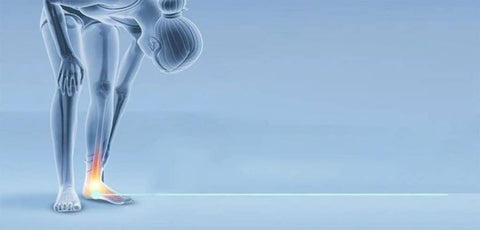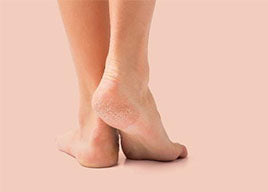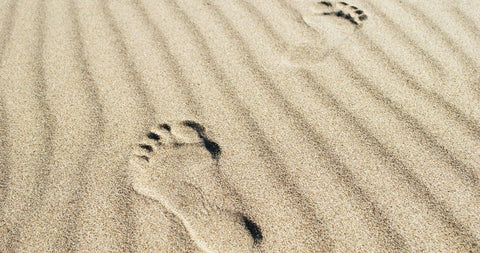
Heel and ankle pain
They’re usually the last things we take care of, but the demands made on our feet and lower limbs can lead to a whole range of issues. There’s a lot going on in our feet: bones, ligaments, tendons and many more which means the causes of foot pain can range from a mechanical or structural issue. They’re what get us moving and are the foundation of our body health, so look after them using our tips to help avoiding and managing everyday heel and ankle pain.
This is not a diagnostic tool. This healthcare professional does not endorse Scholl products and were paid by the makers of Scholl for their time producing this video
What are the common causes of heel and ankle pain?
Heel and ankle pain are common, and in most cases are caused by some form of small injury or repetitive stress that occurs faster than the body can heal. Here are just a few conditions and symptoms that could be causing pain:
Plantar fasciitis (also known as ‘jogger’s heel’)
Pain under the heel when taking first steps after waking or after a period of not moving. You may also have difficulty raising your toes off the floor and there are no visible features.
Achilles tendonitis
Tenderness and aching at the back of the leg or above the heel. You may experience pain in the calf when standing on tiptoes or going up stairs
Bursitis (inflammation of fluid-filled sacs that cushion joints)
A dull, achy pain at the back of the heel.
This is not a diagnostic tool. See your healthcare professional if needed.

Are there any genetic or lifestyle factors that play a part in this condition?
Heels and ankles are designed to absorb the impact of your body weight when walking, running or undertaking any form of physical exertion, so anyone can develop heel and ankle pain at any point in their lives, and sometimes pain can clear up on its own. One genetic factor that plays a role is your underlying foot shape such as flat feet and high arches that may lead to poor mechanical function. Lifestyle factors such as ill-fitting footwear, or being overweight or sporty can also increase the risk of heel and ankle pain. Older people and those with other medical conditions are also more susceptible.
What level of pain is normal, and when should I seek medical attention?
You can ease most common heel and ankle pain yourself at home, following the tips below. However, if you experience any foot care issues that do not resolve themselves naturally or through routine foot care within two weeks, if the pain is stopping you doing normal activities, the pain is reoccurring, if you experience any tingling or loss of sensation, if you have diabetes or if you experience severe pain after an injury, your foot is in a funny shape, a snap, grinding or popping noise at the time of injury and difficulty moving your ankle or foot, please contact your local healthcare professional for further medical advice.
Tips for protecting against and managing heel and ankle pain
You can help ease the pain yourself by trying the following:
- Put an ice pack or bag of frozen peas on the affected area for up to 20 minutes every two to three hours.
- Wear medium heeled shoes (up to 3 cm high), with good heel cushioning and effective arch support.
- Minimise walking or exercising on hard ground.
- Perform gentle stretches.
- Wear heel pads or ankle supports.
- Avoid putting weight on your foot or standing for long periods of time.
- Refrain from going barefoot or wearing ill-fitting and flat shoes.
- Losing weight if you are overweight.
All information presented on these web pages is not meant to diagnose or prescribe. In all health care matters, please contact your healthcare professional
To explore related products, click here.
UK/SC/0319/0049e
